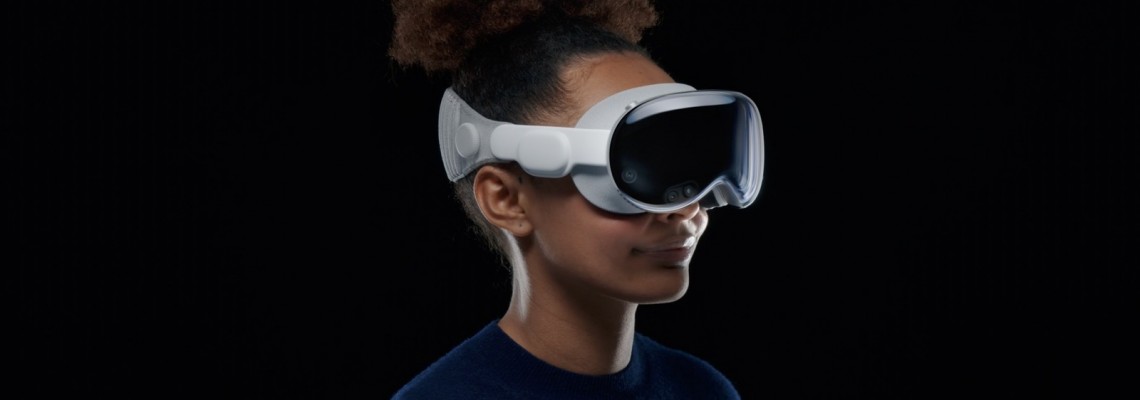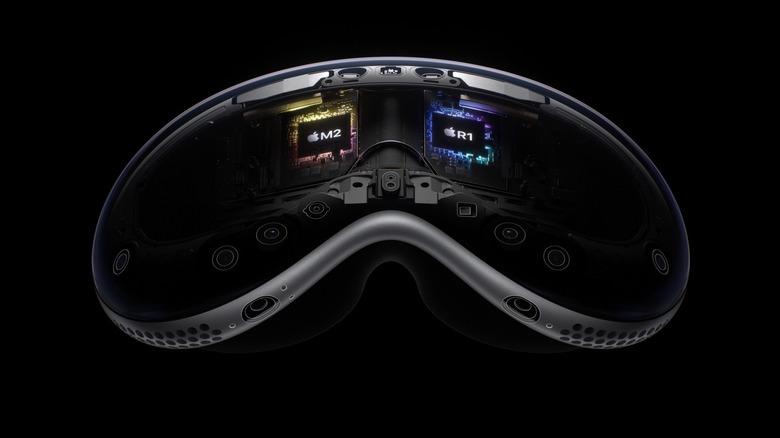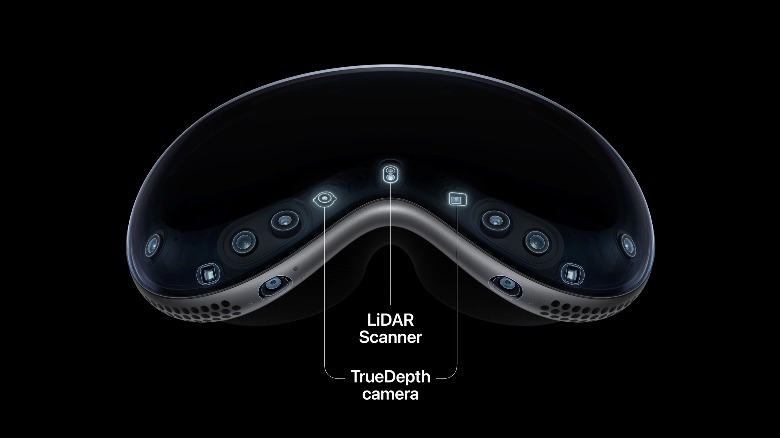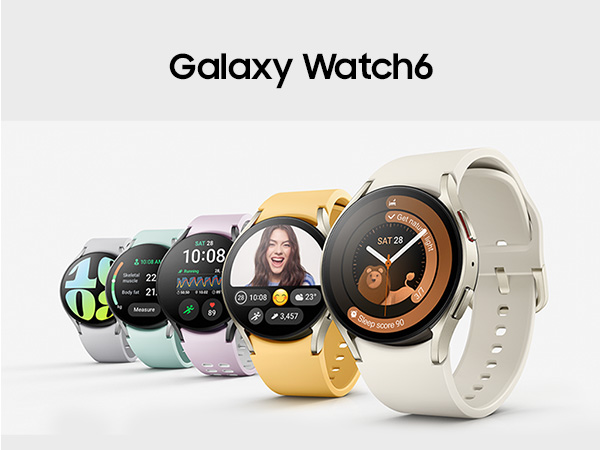
Apple finally lifted the covers from its mixed reality headset at WWDC 2023, showing off its high-end hardware. Crafted out of aircraft-grade aluminum, the headset contains displays loaded with 23 million pixels that are claimed to offer an "infinite screen real estate." To put that into perspective, that's like reserving a 4K screen for each eyeball, whether for gazing at a macOS widow, watching a 3D film with Spatial Audio enabled, or playing Apple Arcade games.
Apple's patent micro-OLED display tech is at the heart of the screen, an evolution of the mini-LED screen we last saw on the 12.9-inch iPad Pro and the current-gen MacBook Pro. At the center of it are catadioptric lenses, while Zeiss optical inserts handle vision correction. However, one of the most incredible tricks of the curved glass exterior is the EyeSight tech, which allows a pass-through view of a person's eyes.
Apple
This was achieved using polished laminated glass with its own optical surface that seamlessly meets the metallic frame. To handle the issue of light leakage, Apple is touting Light Seal, which is essentially a fancy way of saying that the fit will be tailored to each person's face as the textile fabric conforms to the facial structure to ensure a snug fit. Likewise, the audio hardware -– which includes a pair of individually tuned driver units –- conforms to each person's unique ear shape and head movement to deliver what Apple calls Personalized Spatial Audio.
This is cutting edge, but won't cut it for everyone

Apple
The Vision Pro also marks the debut of Apple's first 3D camera, letting users capture memories in spatial view format, save them to iCloud, and relive them in the future with surround sound experience in tow. Inside is a ring of LEDs that work similarly to the TrueDepth hardware on iPhones, alongside an array of cameras for face tracking. Apple uses an advanced encoder/decoder using a neural network to create your digital persona, complete with volume and depth data to facilitate natural-looking video calls.
Powering it all is a dual-chip design with the M2 silicon at its heart. While the M2 provides the raw processing chops, the new R1 co-processor handles inputs from 12 cameras, five sensors, and multiple mics. Notably, this R1 co-processor allows the Visoon Pro headset to virtually eliminate lag and deliver signals within 12 milliseconds. Another neat innovation is the Optic ID, which is essentially Face ID, but for your eyes and follows the same safety protocols.

Apple
To justify the "spatial computer" classification for the Vision Pro headset, Apple has baked in support for its Magic lineup of mouse and keyboard, letting users interact reliably with desktop views seemingly floating in thin air. As cutting-edge as the Vision Pro sounds, it may not necessarily replace your computer, and that's because it can only operate for two hours with the supplied battery pack.
Powering it all is a dual-chip design with the M2 silicon at its heart. While the M2 provides the raw processing chops, the new R1 co-processor handles inputs from 12 cameras, five sensors, and multiple mics. Notably, this R1 co-processor allows the Visoon Pro headset to virtually eliminate lag and deliver signals within 12 milliseconds. Another neat innovation is the Optic ID, which is essentially Face ID, but for your eyes and follows the same safety protocols.

Apple
To justify the "spatial computer" classification for the Vision Pro headset, Apple has baked in support for its Magic lineup of mouse and keyboard, letting users interact reliably with desktop views seemingly floating in thin air. As cutting-edge as the Vision Pro sounds, it may not necessarily replace your computer, and that's because it can only operate for two hours with the supplied battery pack.
Source: Slash Gear www.slashgear.com





Leave a Comment